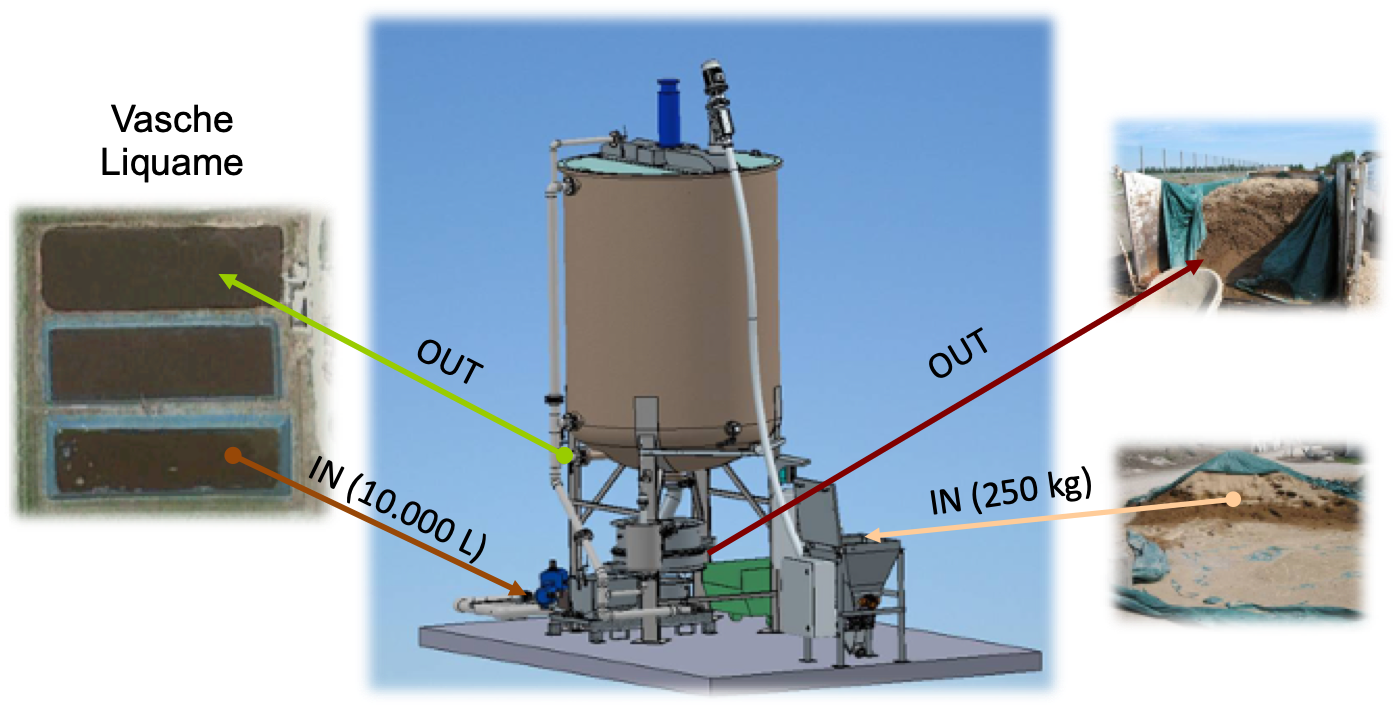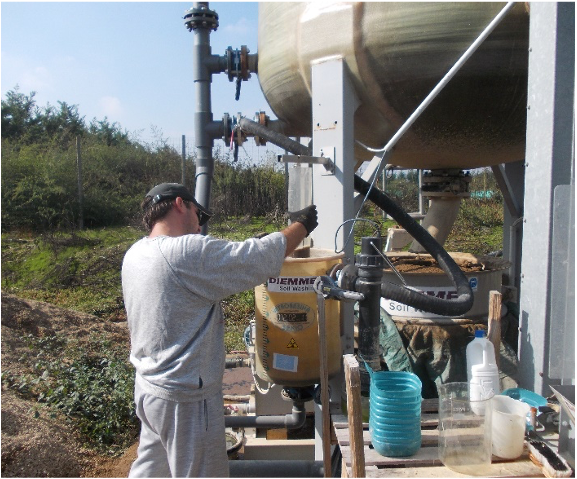To limit the impact produced by organic waste, various types of plants are currently used, in which livestock sewage and / or digestates are treated in order to reduce their nitrogen content. These plants are based on physicochemical or biochemical procedures. In the former, nitrogen is removed by mechanical separation with membranes, through microfiltration, osmosis, electrolysis, stripping processes. In plants using biochemical procedures (biological reactors), nitrogen is instead removed through nitrification-denitrification processes, arrested oxidation of nitrites or combined processes. However, both the plants mentioned are complex and expensive to build and manage. Furthermore, they produce materials which can be used as fertilizers with an immediate but temporary action (therefore they do not produce a definitive improvement of the chemical and physical properties of the soil).
The main advantage of the proposed technology is that it is based on a plant, substantially simple, not expensive to build and manage, through which it is possible to treat slurry to significantly reduce its ammonium concentration and, at the same time, produce a fertilizer and, simultaneously a soil improver.

















